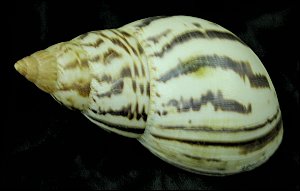

Some of you may feel you're real homebodies, but people are really losers in that arena, compared to some. Most plants, of course, are rooted in place and have no choice but to stay at home, but that's kind of a loser stance, too—if the home scene turns nasty, they have no way to leave.
Now the snail, on the other hand, seemingly has it made. A nice sturdy, custom-made domicile always with you and, most importantly, portable. Run out of food, move on. Looking for a mate, follow the nearest slime trail. Run into a predator, scrunch down and protect your vulnerable parts. Getting too cold, retreat—house and all—deep into a pile of litter and safely dream the winter away, snug as a bedbug.
Of course, nature does tend to make you pay for what you get. Snail
shells are costly to build and maintain, and moving the heavy things around is really
no fun. But, as often is the case, there's a silver lining—blessed with the brain
of a snail, who notices?

Contributor: Arthur H. Harris, Laboratory for Environmental Biology, Centennial Museum, University of Texas at El Paso.
Desert Diary is a joint production of the Centennial Museum and KTEP National Public Radio at the University of Texas at El Paso.

Shell of the Giant African Land Snail (Achatina achatina). Centennial Museum specimen. Photograph by A.H. Harris
Metcalf, A. L., and R. A. Smartt (eds.). 1997. Land snails of New Mexico. New Mexico Museum of Natural History and Science, Bulletin 10:1.145.